

Federico, Paul's cousin, along with his wife Valentina and their daughter Gulia took us to the village of Gradara. This village is included on the list of The Most Beautiful Villages in Italy, and it was easy to see why. The village is lovely, despite the damp afternoon on which we visited it. It was late October when we went, and the village was gearing up for a big Halloween festival. Although Halloween is not a big holiday in Italy, it is becoming more popular and Gradara is all-in, running a 'Halloweekend' festival. Decorations greeted us on our way into the main part of the village.
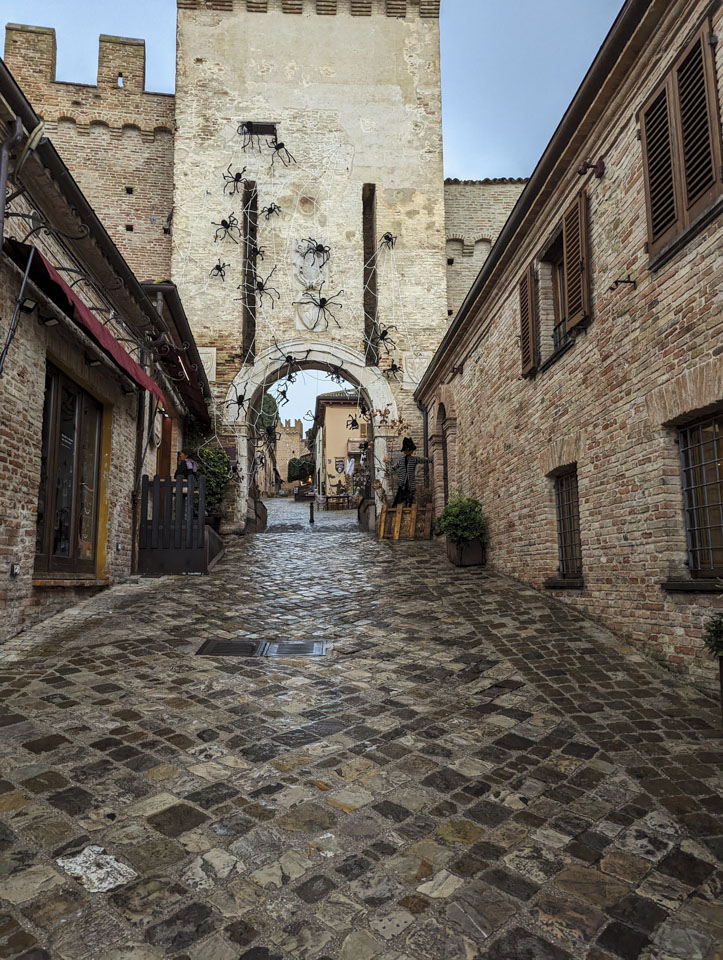
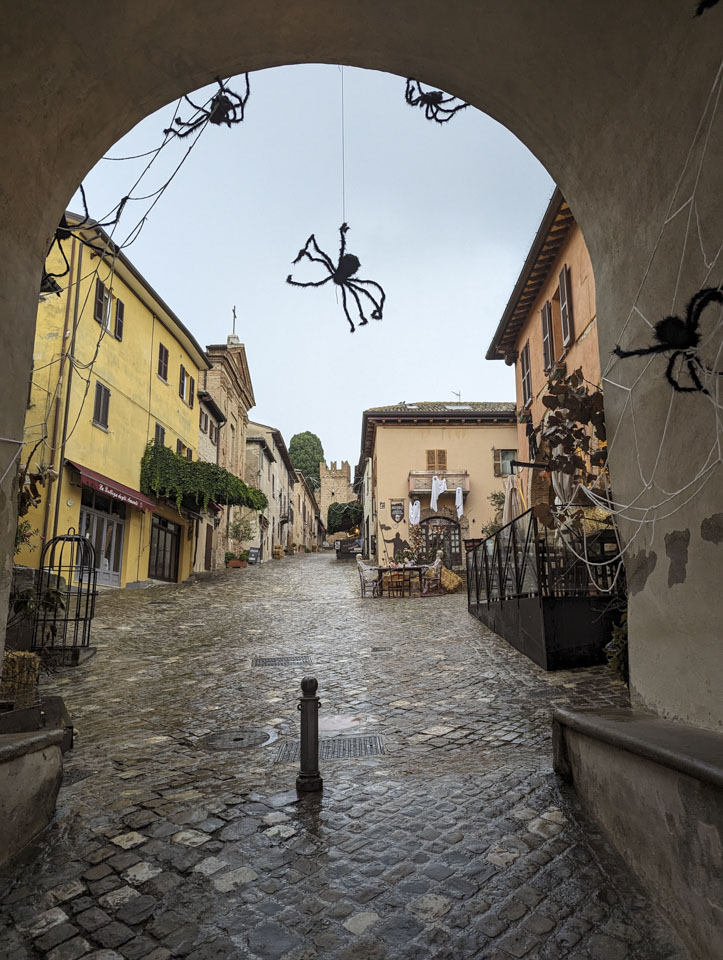
It turns out that Giulia is a big fan of Halloween (perhaps because giving candy away is part of the tradition). Here she is in front of some card players who must have forgotten who's turn it is to go next.

This is the entrance to the castle.

The castle is in very good shape. There was a plaque on a wall that read:
This fortress, which had fallen into total ruin due to the action of time and the carelessness of men, was able to rise again to its ancient splendor thanks to the generous work of a great patron, engineer Umberto Zanvettori who began its prestigious restoration in 1923.
Placed by the municipality of Gradara, for it to be known to posterity
That quote brings us to a bit of history for this location. The castle was originally built in the 1100s and renovated periodically through the 1500s. It belonged at various times to many different powerful families from the area: De Grifo, Malatesta, Montefeltrom, Sforza. In 1641 the castle became directly controlled by the Papal state, and they did not seem to have much interest in the property. It was finally bought, in 1920, by the Zanvettori family who then restored the castle and walls. This restoration was not historically accurate but was inspired by the various ages that had passed since the castle was originally built. After the restorations were completed, the castle was sold to the state with the provision that Umberto Zanvettori's widow could live out her life there. She must have been very young, because it seems she continued to live there until 1983.
We won't include pictures of every room, but we will start with the first room on the tour, The Torture Room (or Prison). This room was originally for the storage of goods, and in fact has a water supply tank that was used during long sieges. It was only much later (according to the sign in the room) that it was used as a prison. Gulia demonstrates the chains that would keep a prisoner in place.
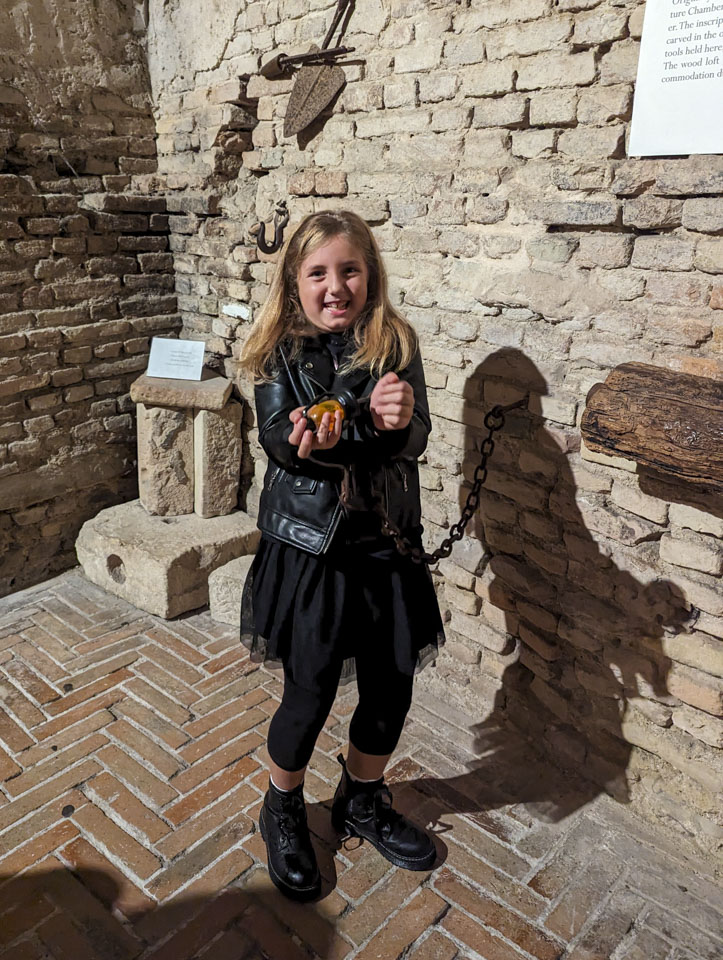
The main focus of the tour is the castle itself, but it does include some pieces of artwork. One of those is 'Madonna on the Throne with Child and Saints Stefano, Sophia, Archangel Michael, and John the Baptist' by Giovanni Santi (father of the famous painter Raphael). The piece dates from 1484. It was once in a local church. The second person from the left is Saint Sophia, and she is holding a model of Gradara ... so even this piece of artwork features the castle.
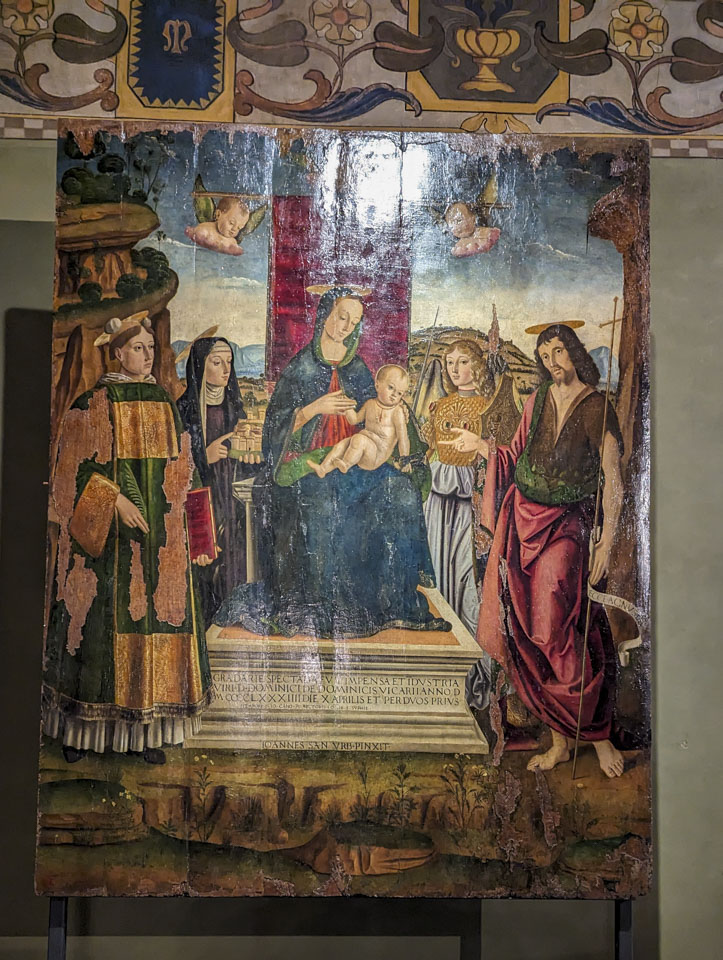
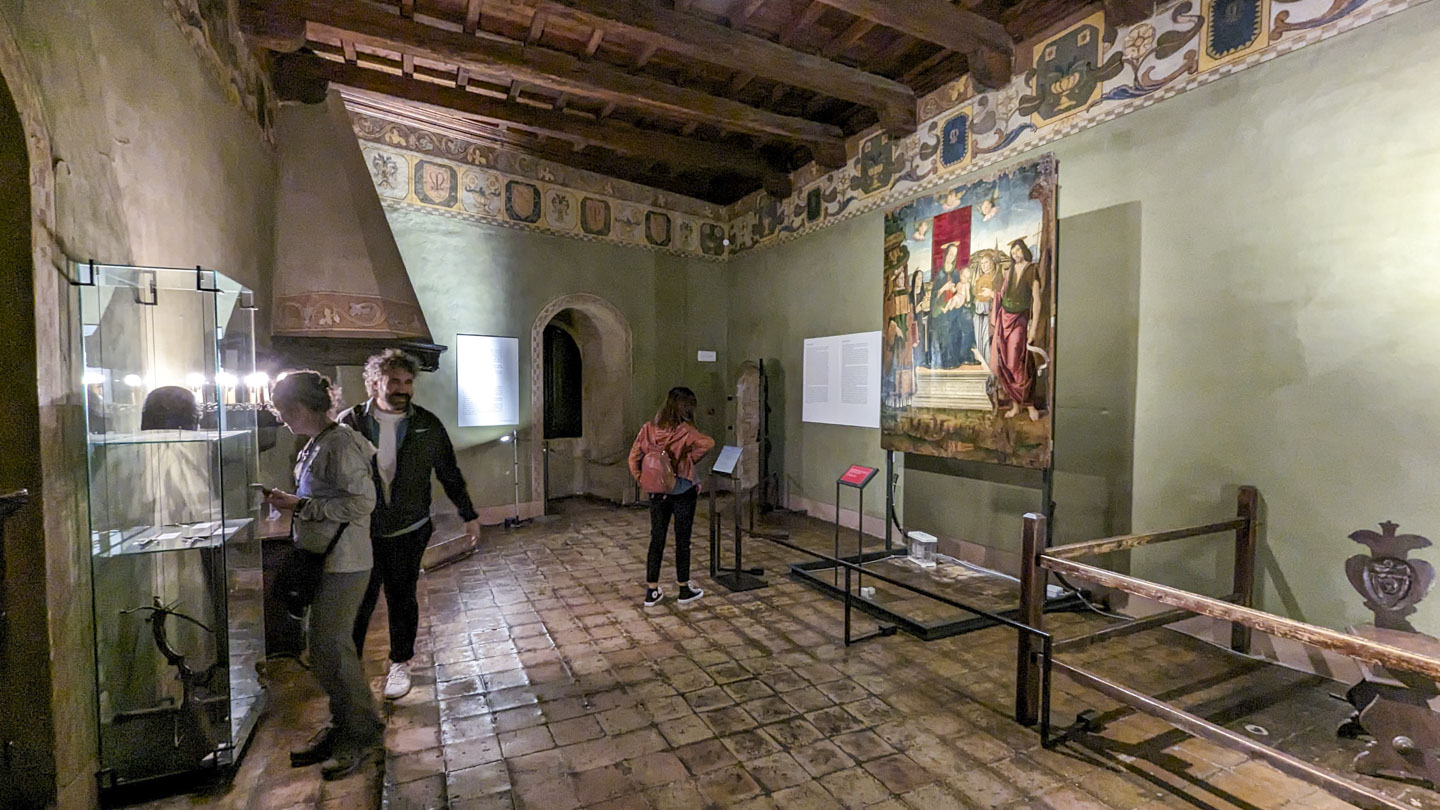
Another room was the Sigismondo and Isotta (Malatesta) room (which is actually a few older small rooms combined into one larger room). If you want to read about a bit of political intrigue and how dangerous politics was in the 1400s, you can read the Wikipedia page on Isotta and related articles. Suffice it to say that many in power did not live long peaceful lives. The ceiling is decoratively painted to give an illusion of depth, and the tops of the walls have the shields that bear the Malatesta family arms.

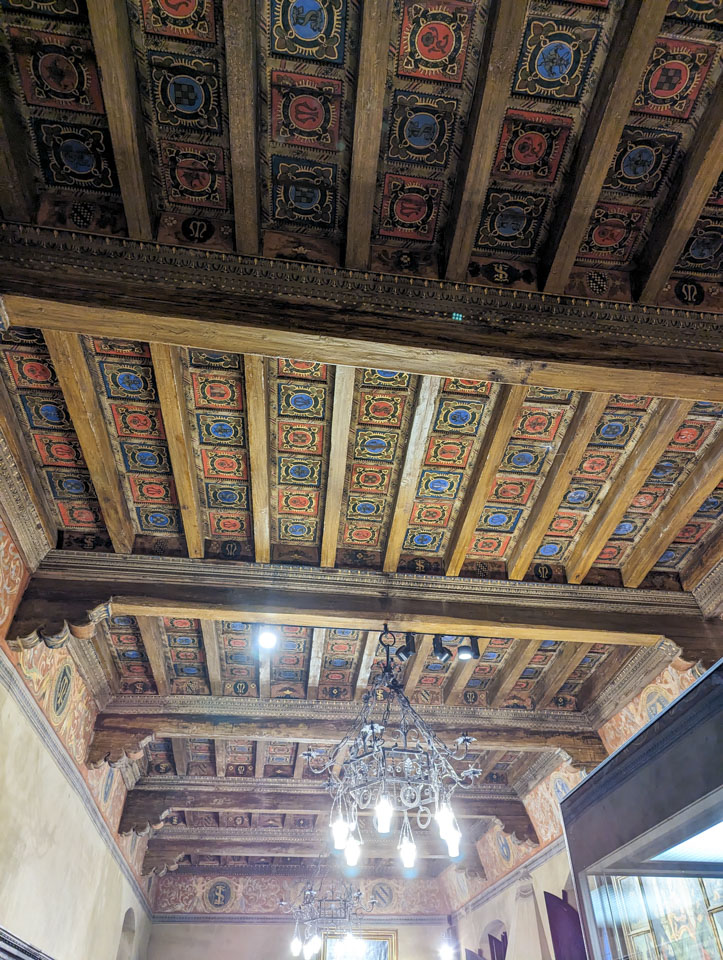
The next room has a little test in Latin for those who want to try translating the expressions in the shields.
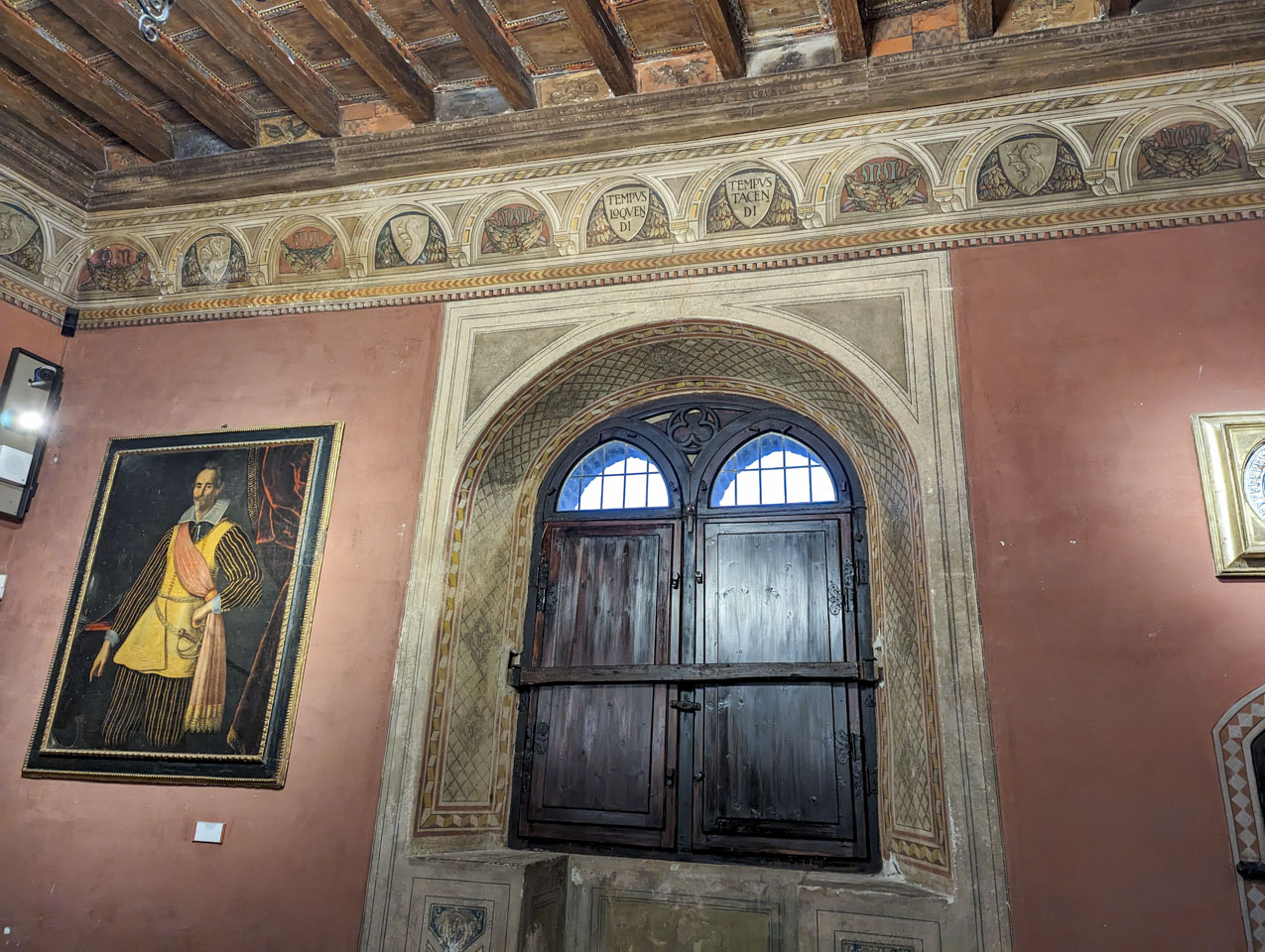
"Tempus Loquendi Tempus Tacendi", which translates to "A Time To Speak, A Time To Be Silent". These were painted in the early 1920s, but represent the heraldic motifs of the Malatesta family.
The 'Sforza Lion' room represents another of the powerful families that controlled the castle and area for a while (late 1400s and early 1500s). The room looks like it would have been a cold and uncomfortable bedroom. It did, however, have really fun lion and dragon wing decorations on the walls.
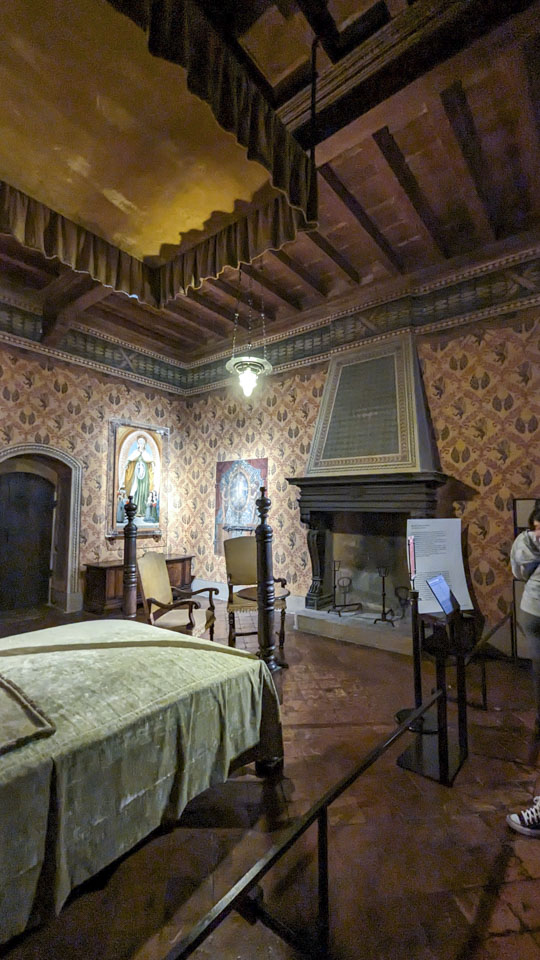
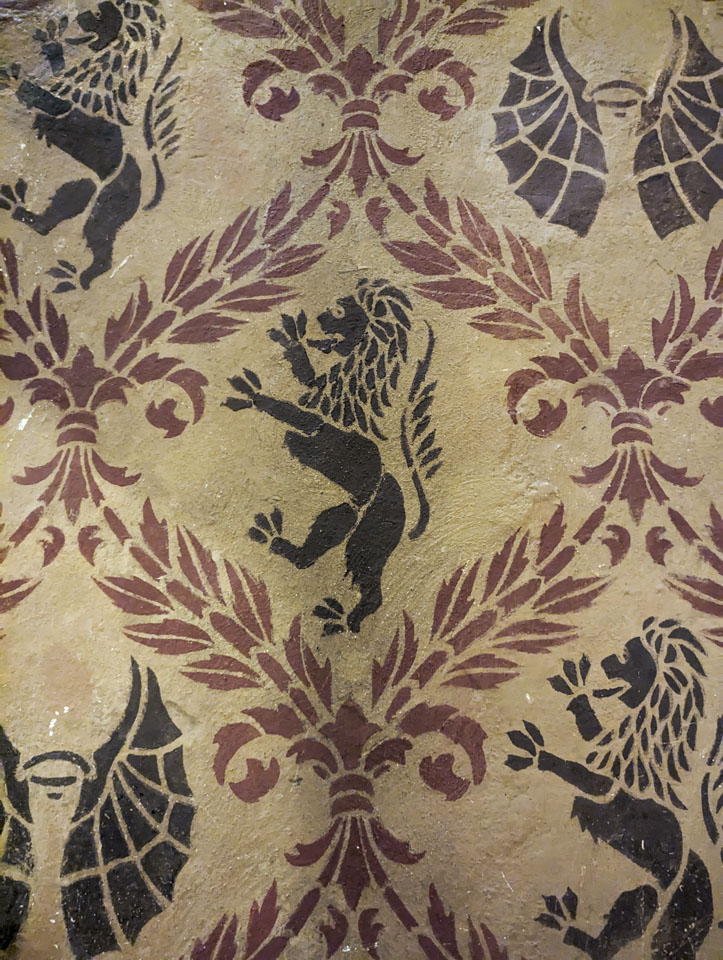
Proof that this was a house, not just a military fort, can be found in the Putti Room. 'Putti' are what we more commonly call cherubs, although it can also reference young boys (without wings). The walls of this room have scenes of putti playing games, and is believed to have been decorated for a baby, Costanzo Sforza, in 1510.
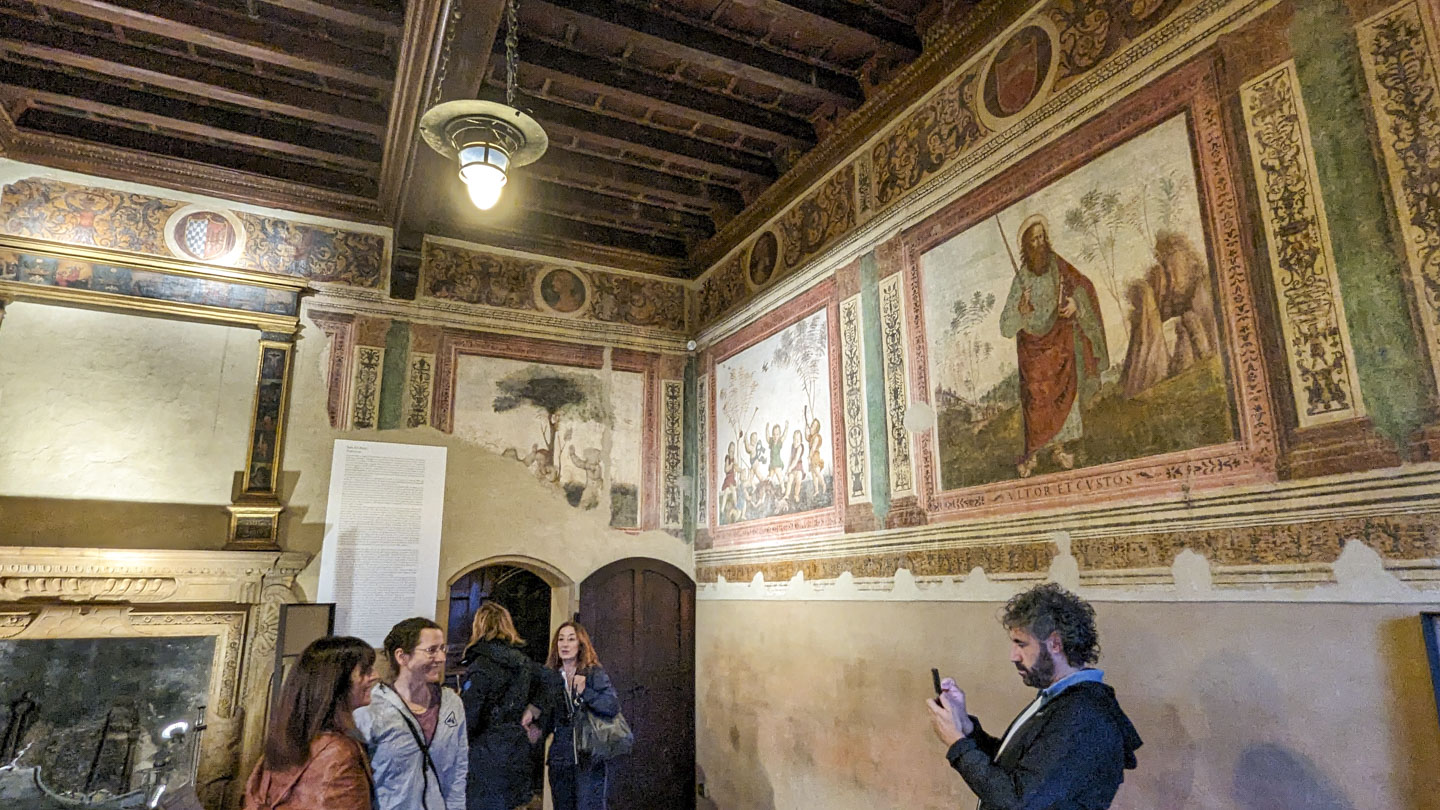
Now we get to what you have all been waiting for, even if you didn't know it: Francesca's room. According to the information sign, this room was heavily remodeled in the 1920s. The new look was inspired by a famous theater production of the story of Francesca and Paolo from Dante's Inferno. A quick summary of the story: While Francesca was in an arranged marriage, she had an afair with her husband's brother Paolo. The husband eventually discovered the infidelity and killed both of them. The chairs represent where Francesca and Paolo innocently sat to read together before starting their affair, and in front of that is a trap door where Paolo tried to escape after being discovered. The outfit on the mannequin is also based on one from the play.
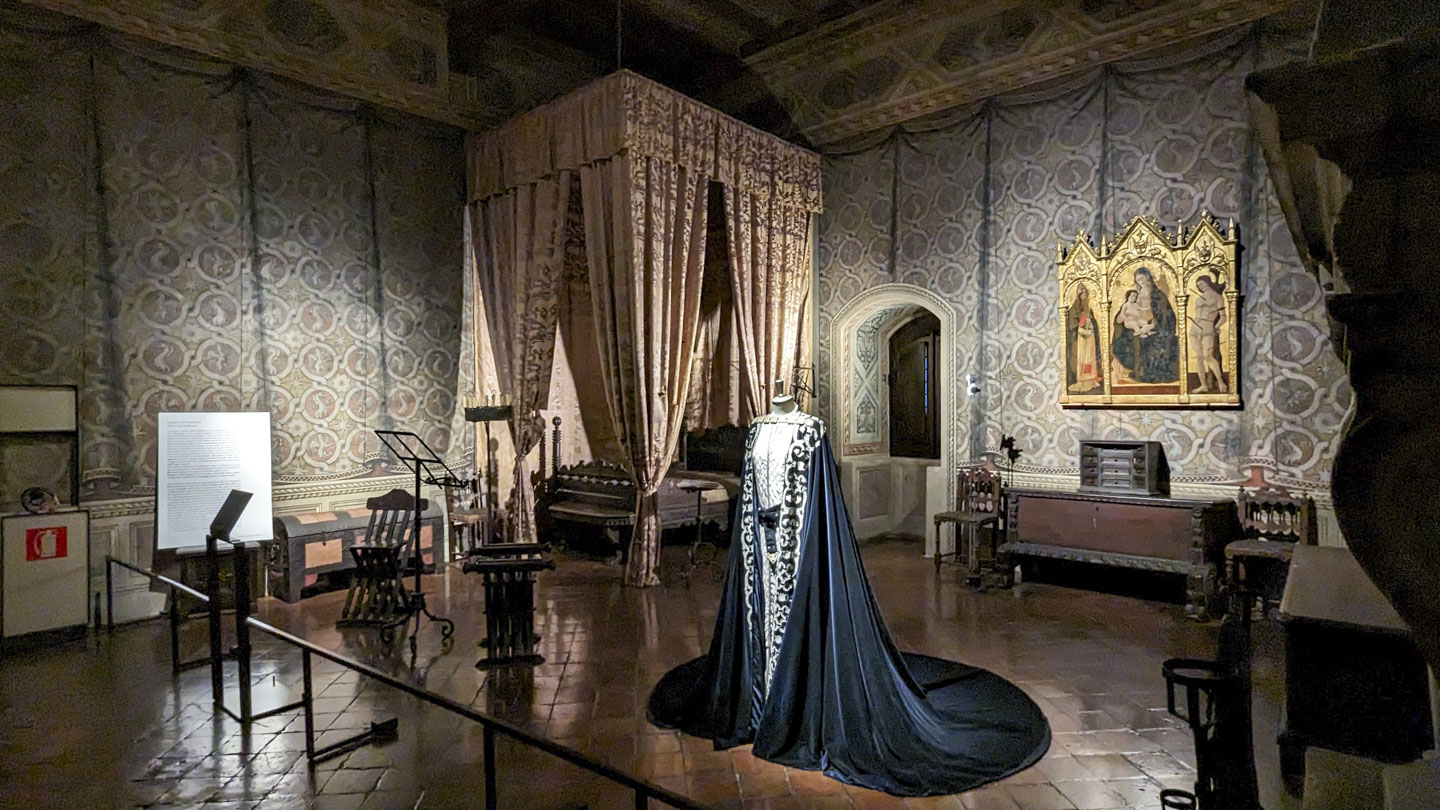

We crossed a bridge on our way out of the building into a courtyard. In the wall is a long recessed area. Reflecting the turbulent past of this building, the beam above the bridge could be used to raise the entire bridge to prevent access.


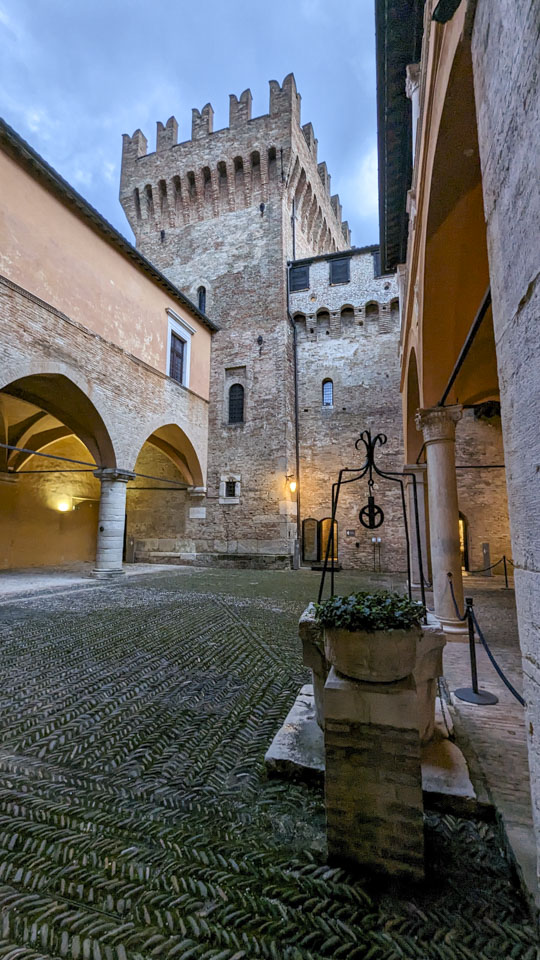
Here is a picture of Anne in the doorway leading out of the grounds after we were done with our tour. It led out to the top of a set of stairs that provided a lovely view of the countryside. (We did not go to the secret garden shown in the sign of the second photograph.)
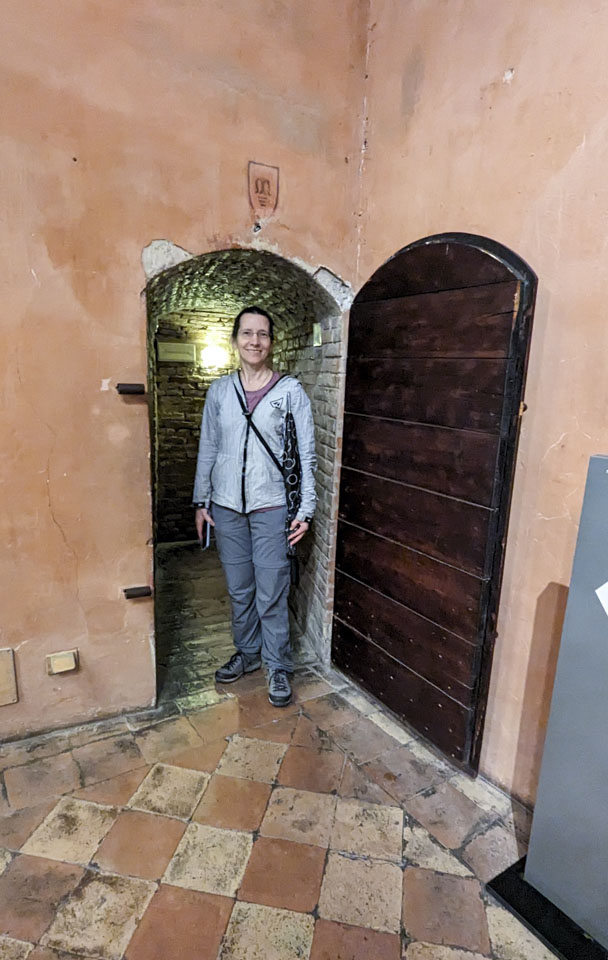
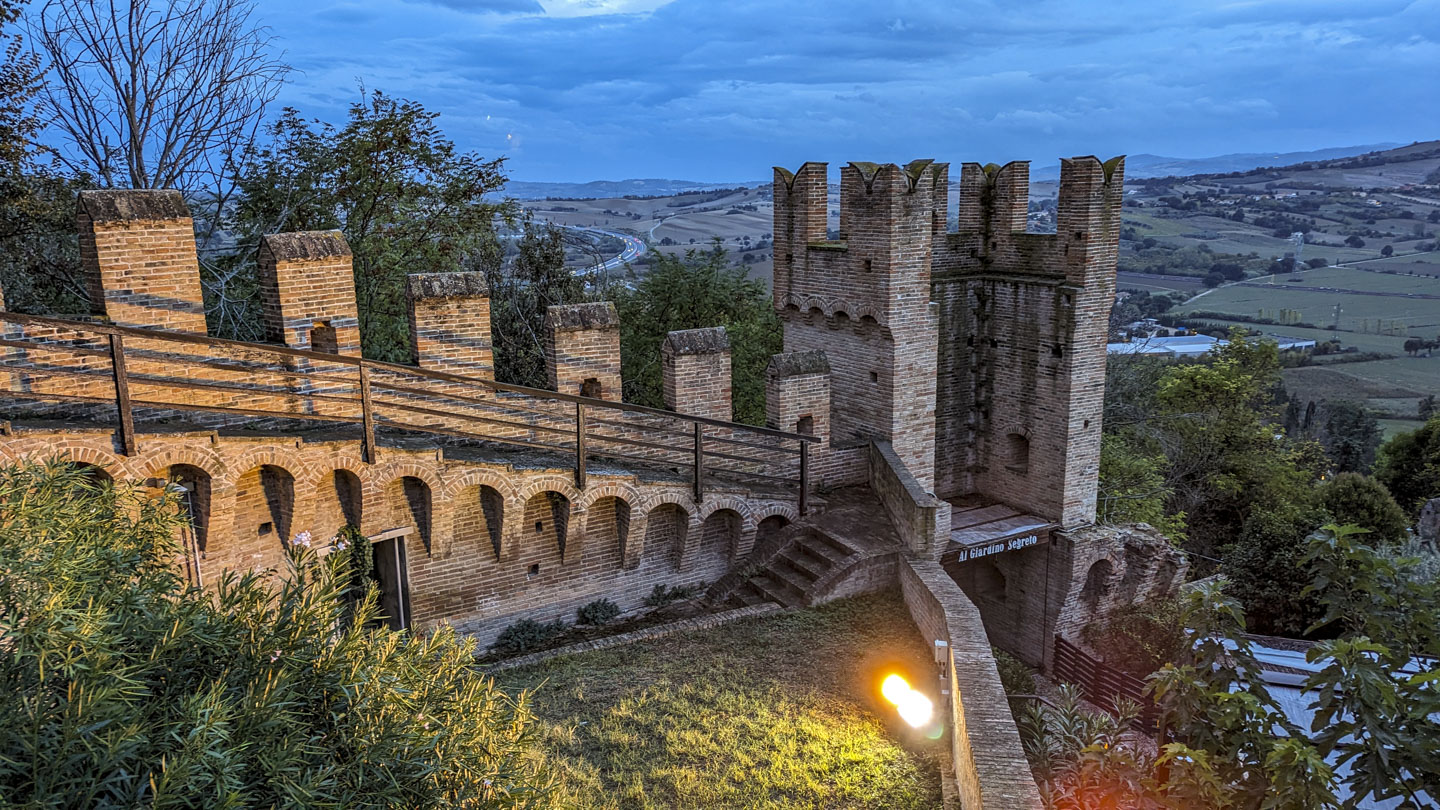
The castle is lit in the evening. If you ever visit Gradara, Federico told us that the pizzeria seen in the second photo is excellent; unfortunately it was closed on the day of our visit.
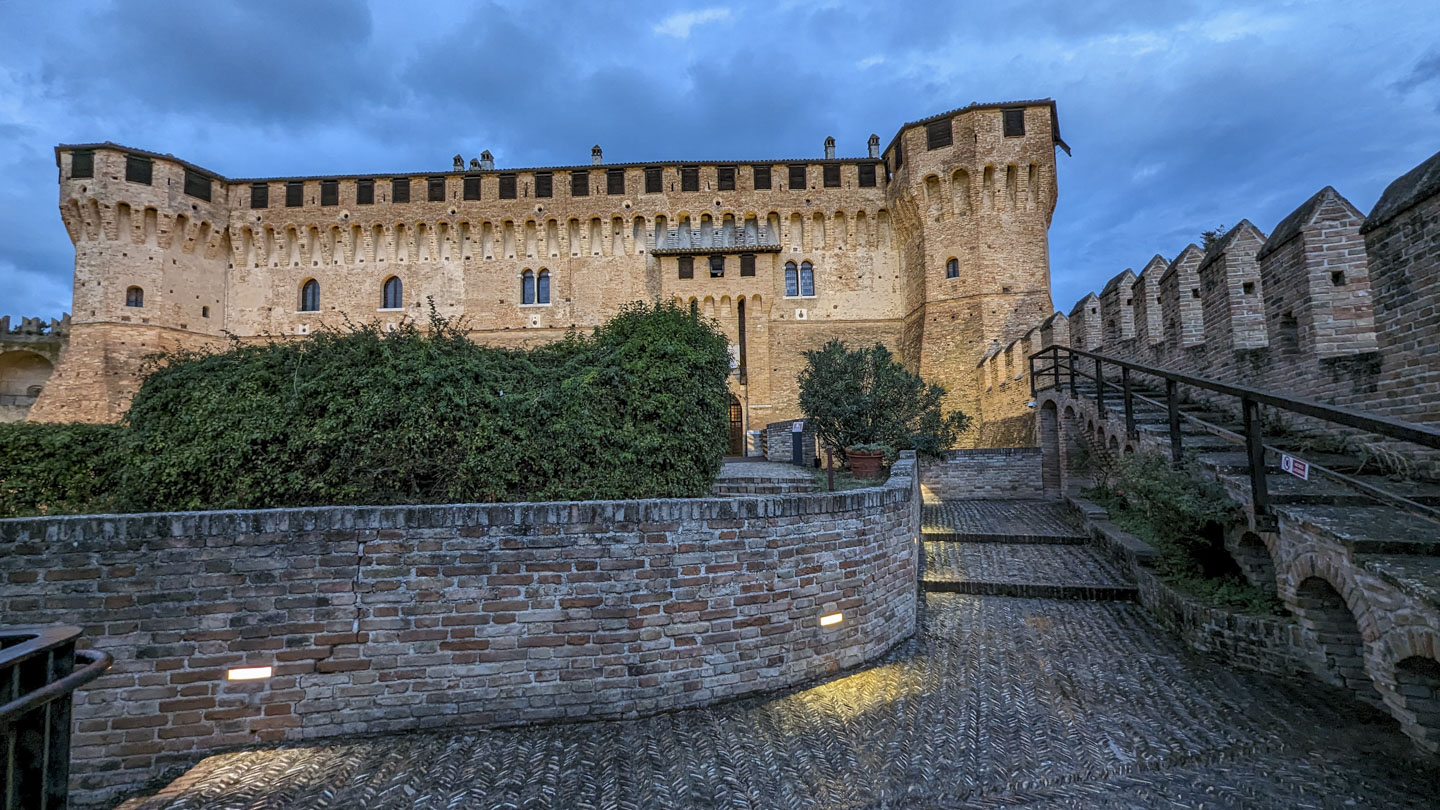
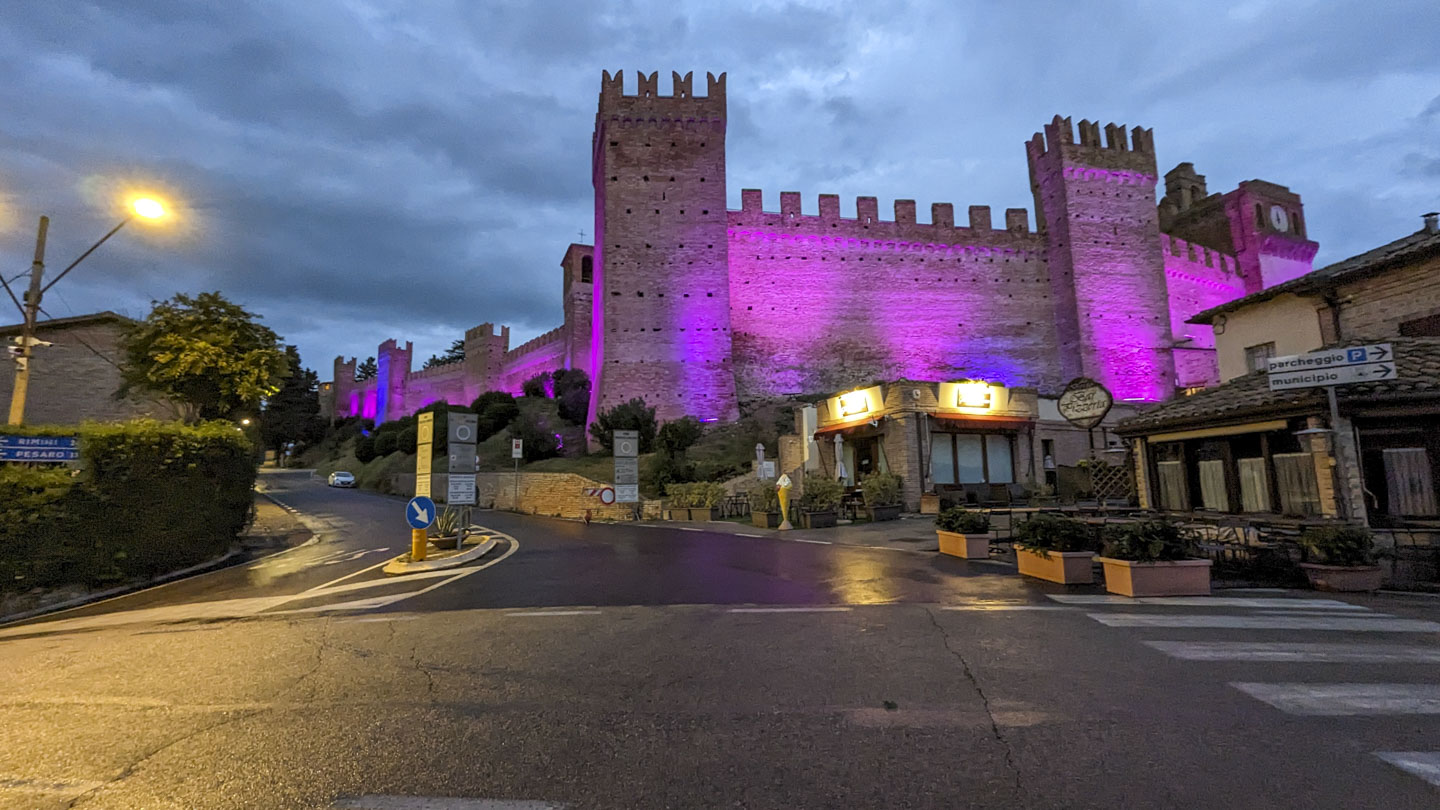
Here is a cute spot to rest while walking around the village.
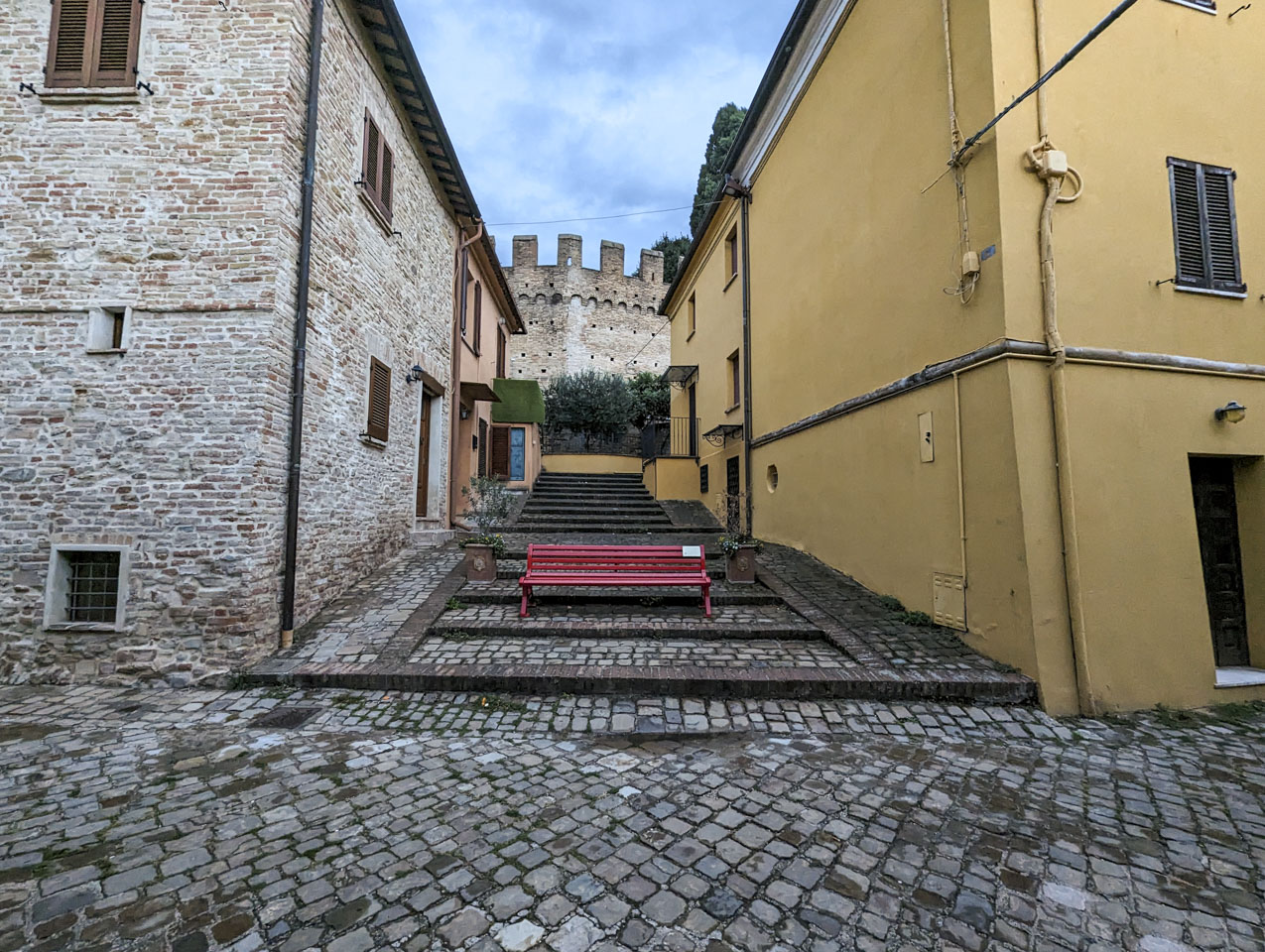
Gradara is at the northern edge of Le Marche, not even 2 miles away from the sea. This picture is looking north towards Rimini, with the sea visible on the right.
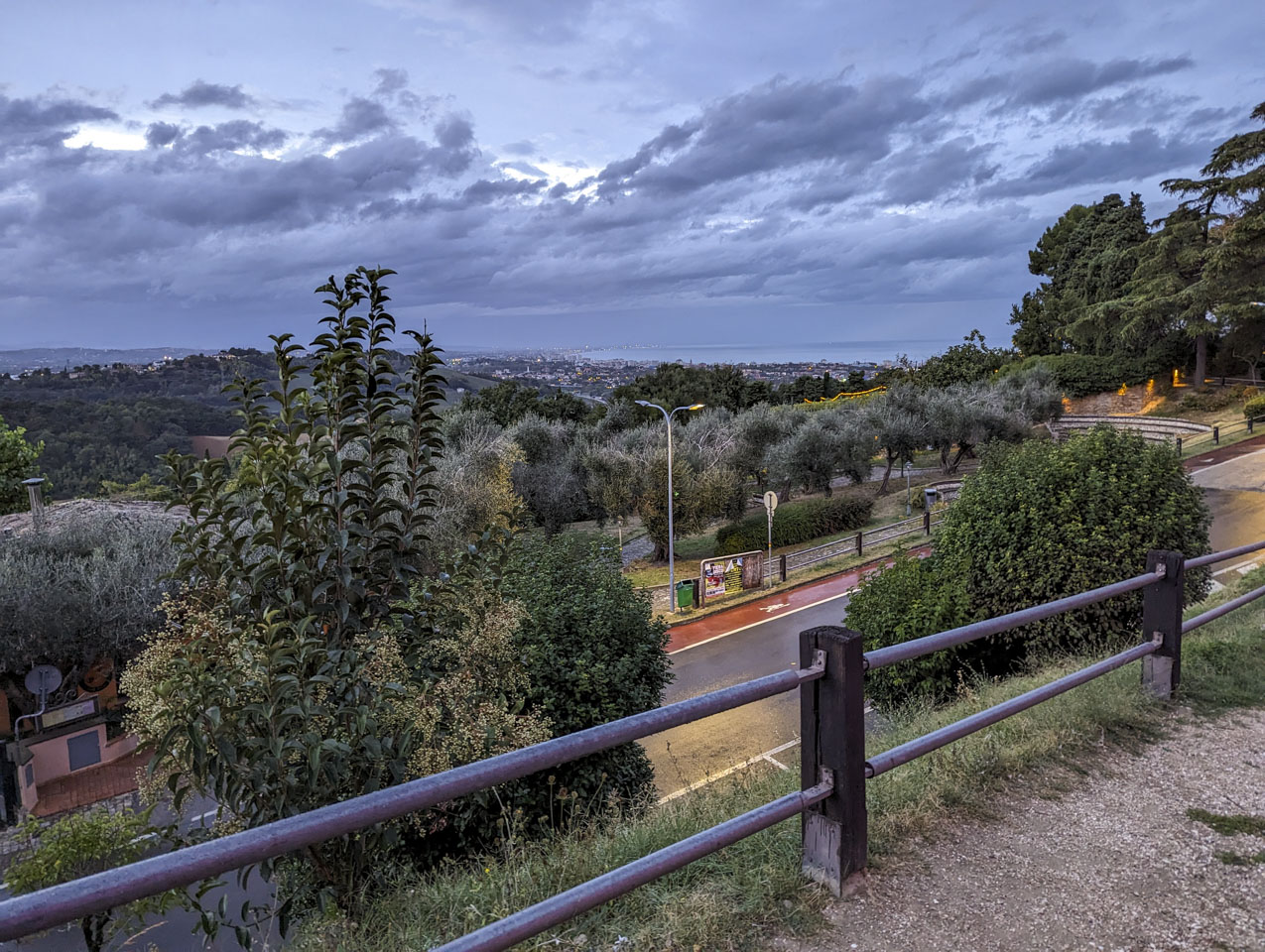
Giulia escaped the chains from the beginning of our tour, so she was put into the iron cage. She escaped from this very quickly.
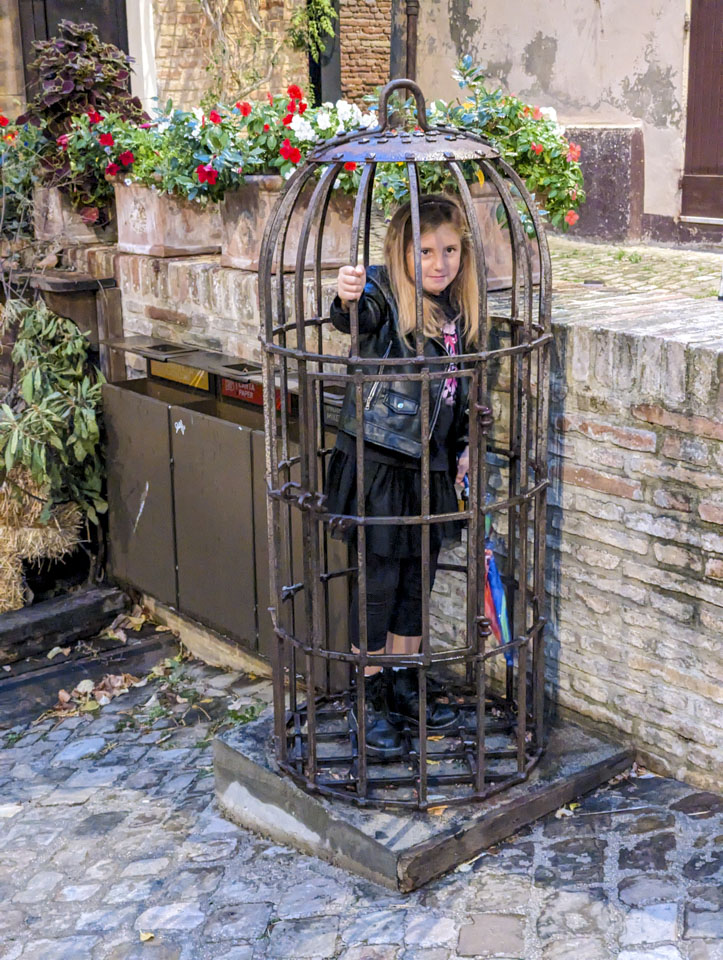
Since the pizzeria was not open, Federico and Valentina lead us to a winery not far away, Enio Ottaviani Cantina. It is a very modern facility. There we tried the wine, and also split a large sampler focaccia that had all sorts of delicious toppings.
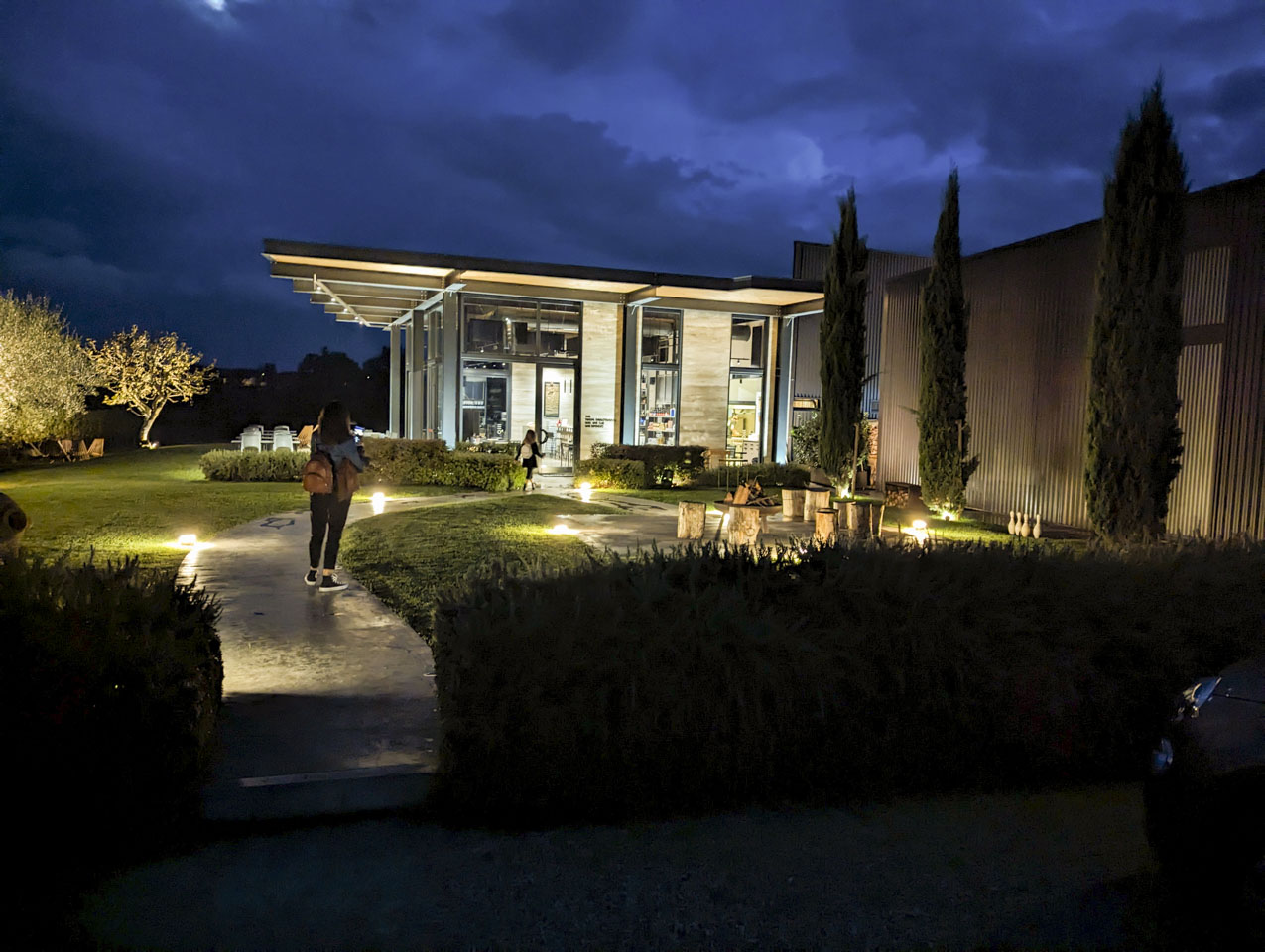
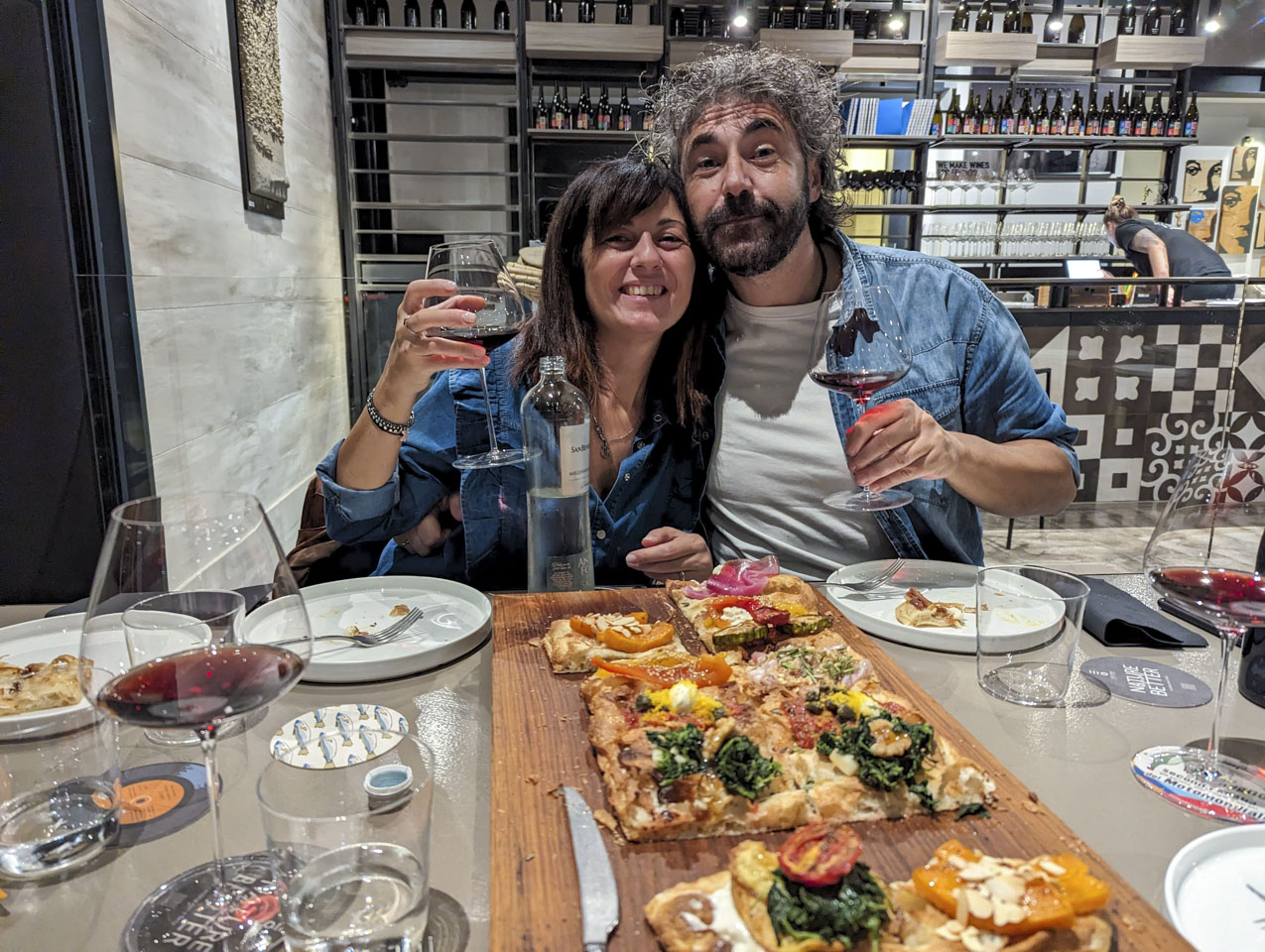
But we were not done! They then brought us to Ristorante Alla Stazione which, as you might guess from the name, is in an old train station building. It is also very near the sea and features a lot of seafood. Filippo joined us (and got a very fancy skewer dish for his meal). We learned that Giulia is very good at math. Anne encouraged her to become an engineer but she replied, as the Italian that she is, that she wants to become a fashion designer.
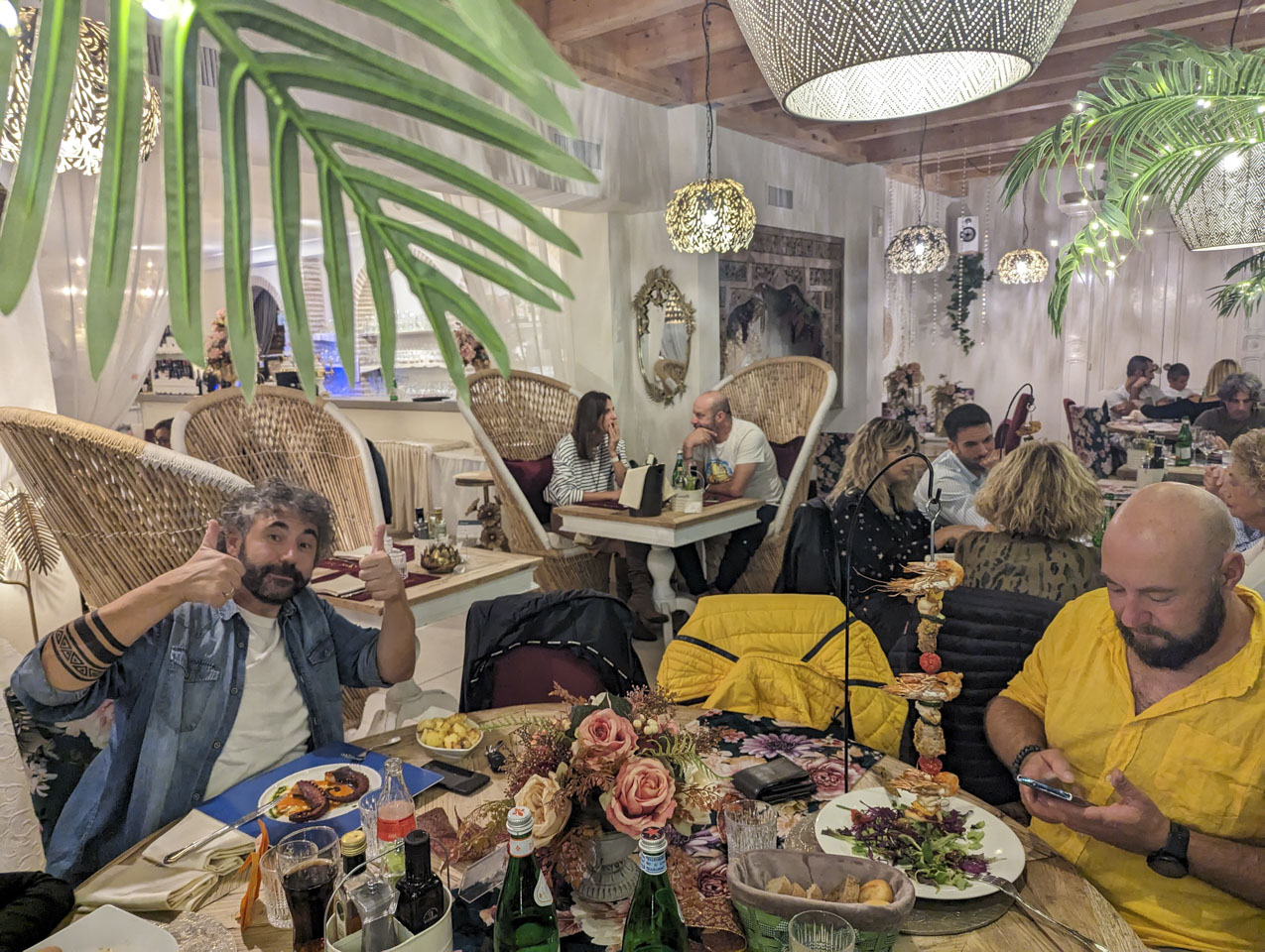
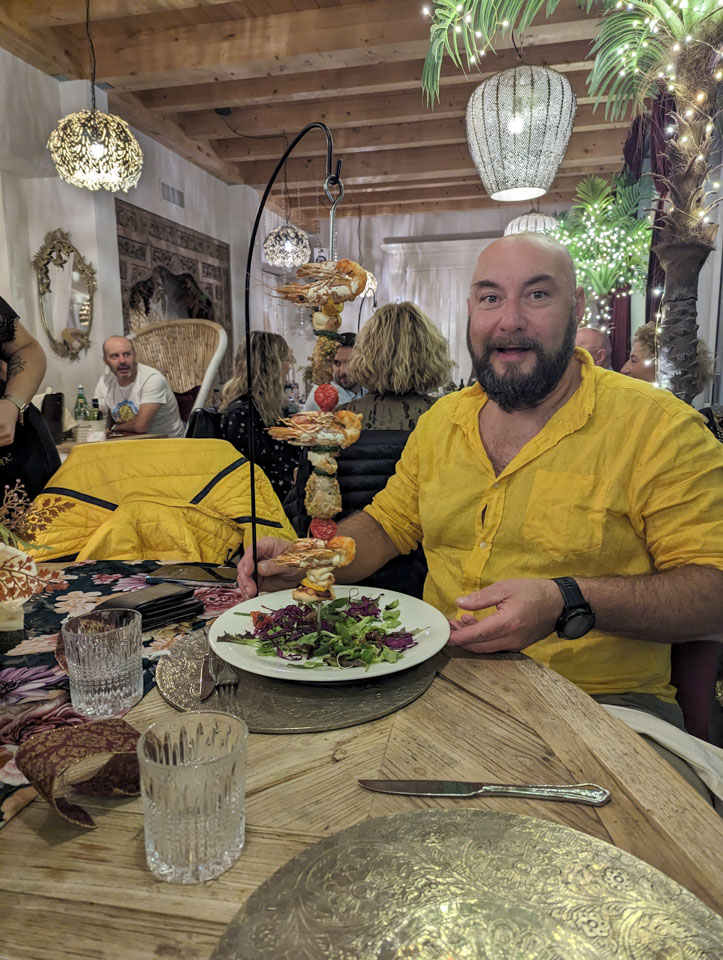
Here is a map of our adventures on that afternoon and evening.
Updated August 2024